2023 Kia Niro EV and Hybrid First Drive Review

FAST FACTS
| Motor: | 1x permanent-magnet synchronous motor |
| Battery Capacity: | 64.8 kWh |
| Output: | 201 hp, 188 lb-ft |
| Transmission: | 1AT, FWD |
| US fuel economy (MPGe): | 126/101/113 |
| CAN fuel economy (Le/100KM): | 1.9/2.3/2.1 |
| Range: | 253 mi / 407 km |
| Starting Price (USD): | $40,745 (inc. dest.) |
| As-Tested Price (USD): | $45,745 (est, inc. dest.) |
| Starting Price (CAD): | $46,945 (inc. dest.) |
| As-Tested Price (CAD): | $54,945 (inc. dest.) |
A lot of car companies claim their wares are for everyone. But not many come in hybrid, plug-in, and full EV form. The 2023 Kia Niro does.
That in itself isn’t new; the previous-generation Niro pulled off the same feat. So did its car-shaped sibling at Hyundai, the original Ioniq. While the latter has disappeared this year, Kia has fully revamped its small SUV-slash-hatchback hybrid (pun fully intended). It’s now the only car out there to offer all three options in both the US and Canada.
This second-generation Niro hides thoughtfully evolved drivetrains under dramatic new styling. With all three electrified drivetrains available right from day one, the new-age Niro offers something for everyone. After spending the day driving the hybrid and EV, however, it’s clear not all new Niros are created equal.
Get a Quote on a New 2023 Kia Niro EV3 the hard way
The 2023 Kia Niro lineup starts with the hybrid model. It once again uses a 1.6-liter four-cylinder, producing a little over 100 hp on its own, paired with a 32-kW electric motor drawing from a 1.32-kW battery. Combined system ratings are 139 horsepower and 195 pound-feet, once again running through a six-speed dual-clutch transmission, like every other hybrid in the Kia/Hyundai fleet. The plug-in swaps in a bigger battery (11.1 kWh) and electric motor (62 kW), which results in a bump to 180 horsepower. The EV chucks all that out, replacing the ICE with a 64.8-kWh battery and a motor capable of 201 hp and 188 lb-ft of torque. Keen-eyed readers will notice that’s a drop from the 291 lb-ft of the old car.
Let’s get another thing out of the way: the Niro is (still) one of those crossovers that doesn’t offer all-wheel drive. Kia has stuck to front-drive only, and honestly, we’re not too bothered by that. It’s a broken record but it deserves a replay: in the snow, winter tires are more important than number of driven wheels. Besides, Kia customers have the choice of the smaller Seltos or larger Sportage if they want all-paw grip.
Packaging a petrol engine in the nose gives the Niro a bluffer front-end, and instead of trying to mask those proportions like the original model, the 2023 leans into the weird. It borrows heavily from 2019’s Habaniro concept, a car Kia included in the drive program. The production car is toned down, sure, but the lineage is clear, especially up front.
While the angular lower shapes house the mainbeams, in person the headlights blend in with the wide upper grille to make the “face” of the car. The HEV and PHEV extend the chrome “eyebrows” right to the bumper shutline, while the EV has them plucked about two inches inward. It’s stern, but not angry. Move around the side and the Niro rides on anywhere from 16 to 18-inch wheels, depending on model.
It’s hard to miss the aero blade C-pillar, which can (and, in my opinion, should) come in a unique contrast color as seen here. Yes, it’s like the Audi R8, and yes, it’s also functional. Swing around to the back you’ll find the super-thin vertical taillights sitting proud of the bodywork, hiding a vent that smoothes airflow—just one way Kia has eked out more efficiency from this model. Those taillights necessitate low-mounted turn signals. We asked Kia about its recent trend of East Side Boyz-approved turn signals, especially as high-riding crossovers make up more and more of traffic, and were told it’s, at least partly, to keep the tailgate uncluttered.
Interior highs and lows
There’s been a similar transformation inside the Niro. A long arc defines the dashboard, providing a mounting point for the conjoined infotainment and instrument panel screens. Peep the center console and the switchable touch-sensitive panel from the EV6 and Sportage is back, providing either climate or audio controls. I’m still not sold this is an ideal solution, but it works as advertised, and users can set their preferred startup setting. Kia’s infotainment system remains quick and easy to use, and there are now USB-C ports everywhere. You still need to use the one USB-A for the (wired) Apple CarPlay or Android Auto, however.
SEE ALSO: 2023 Kia Sportage First Drive Review: Whatchu Lookin’ At?The dashboard materials and bio-synthetic artificial leather seats feel good. The headliner, made recycled PET materials, is—different, neither bad nor good. Our usual complaint about piano black applies to the center console, but the biggest interior issue is the door panels. The material that swoops up and over the dashboard looks good, but is hollow and brittle to touch.
Space is generally pretty great for something this size, and the front seats have an optimal mix of squish and support for longer drives. From the front, all three variations are essentially the same; the only real clue is the rotary drive selector in the PHEV and EV. Jump into the back and there’s tons of space for something this size: 39.5 inches (1,005 millimeters) of headroom and a hair more legroom. A taller floor in the EV shaves 1.5 and 2.5 inches from those respective measures. Still adult-friendly, but more in-line with expectactions. The EV and HEV have a super-low load floor capable of gobbling up 22.8 cubic feet (646 liters), or 63.7 cubes (1,805 L) with the second row folded. The plug-in sacrifices about 15 percent of this space to fit its larger battery pack.
EV charges ahead
We start the day with the Niro EV. The electric motor quietly and quickly extricates the Niro from early-morning San Diego traffic. The hills to the north-east of the city offer the sort of playground better suited to sports cars, but the linguini-like layout shows off the clean, direct steering. Crank up the regenerative braking and the one-pedal approach functions much like engine braking in an ICE car. The Niro remains calm and composed here—the benefit of a more car-like layout than most crossovers.
SEE ALSO: Kia EV6 vs Hyundai Ioniq 5 Comparison: Sibling RivalryUnexpected traffic at an important turn forces us on a slight detour. It’s only a few miles, but dissolves into a dirt road halfway through. Chicken-sized potholes send a thud through the cabin, but beyond that, the Niro’s interior keeps the outside world, well, outside. At least partial credit goes to the standard sound-dampening laminated windshield.
While the Niro doesn’t adopt the cutting-edge E-GMP platform from the EV6, it does have that car’s trick Vehicle-To-Load (V2L) system. With the necessary adapter, owners can plug devices into the nose-mounted charge port, running them off the battery. It’s also possible to limit just how much juice these accessories can pull, too. There’s no 350-kW charging capability either; the best you can hope for is 10–80 percent charge in 43 minutes. A Level 2 11-kW setup will top the battery up in a bit over six hours.
SEE ALSO: 2022 Kia Sorento PHEV Review: Plugging the GapHybrid is no hare
After lunch, we’re into the hybrid Niro. Kia keeps the curb weight commendably low, so other than the inline-four hum from ahead, the HEV is just as eager at city speeds. The comparative lack of power becomes more noticeable on inclines and on-ramps, where acceleration is gingerly. The difference between half- and full throttle is more audible than anything else. Nobody is buying a Niro expecting a Stinger, but an estimated 10-second saunter to sixty makes this one of the slower new cars out there.
Where the hybrid makes up time is in its camel-like endurance. The official combined fuel economy figure is 53 mpg (4.4 L/100 km), and even through the hills—and pushing harder than most drivers are likely to—the Niro HEV almost exactly matched that figure by day’s end. Even with a tiny 11.1-gallon (42-liter) fuel tank, that translates to 588 miles (946 km) of single-tank range.
SEE ALSO: 2023 Toyota Prius and Prius Prime are the Prettiest, Most Powerful Ones YetDollars and sense
The 2023 Kia Niro starts at a wholly reasonable $27,785 for the hybrid. Buyers have a choice of five trims (four in Canada). Our top-shelf tester is the Canuck-spec SX ($40,645 CAD), essentially the SX Touring ($36,085) south of the border. That’s a lot for something this size, with these on-paper stats, but the Niro comes positively loaded with tech. A smart power liftgate, heated seats in both rows plus ventilation up front (and a memory feature), a head-up display, a digital key, remote smart parking assist—you can’t get all this in a competitor outside of the Hyundai/Kia family. Even the base model comes with a strong set of driver assists, including automated emergency braking, cross-traffic alert, and blind-spot monitoring.
Slotting into the middle of the lineup is the plug-in. Kia expects this to be the niche offering of the trio, and its shrunken trim walk reflects that; the $35,035 ($39,945 CAD) EX and $40,785 SX Touring. Both my drive partner and I thought that might just be the pick of the litter, though. The extra power alleviates the tardiness of the regular hybrid, and the 34-mile (55-km) all-electric range can cover a lot of daily errands. Depending on where you live, it might also be eligible for rebates, too.
Ditching ICE requires an extra outlay, with the Wind and Wave trims running $40,745 and $45,745 in the US. Canada sticks to the more traditional Premium ($46,945 CAD), Premium + ($49,945 CAD), and Limited ($54,945 CAD) names. Kia is being bullish with the EV, expecting it to account for a full 70 percent of Niro sales.
Final Thoughts: 2023 Kia Niro EV and Hybrid First Drive Review
There is a lot to recommend the 2023 Kia Niro. This is a distinctive, comfortable, and spacious little pseudo-crossover, and the three available drivetrains means there’s a flavor for everyone. It gets a little pricey at the top, but few cars come stuffed with as many user-friendly features. The EV is the one we’d have, but if you aren’t ready to make that jump yet, the hybrid is a smart choice that doesn’t sacrifice usability for style.
FAQs
How much does the 2023 Kia Niro cost?
The 2023 Kia Niro kicks off at $27,785 ($31,945 CAD) for the hybrid model. Moving up to the plug-in costs $35,035 ($39,945 CAD), while the all-electric model starts from $40,745 ($46,945 CAD).
When can you buy the 2023 Kia Niro?
The new Niro is available now in the US; Canadians will have to wait until spring 2023
What is the range of the 2023 Kia Niro EV?
The 2023 Kia Niro EV is capable of driving up to 253 miles (407 km) on a single charge.
Become an AutoGuide insider. Get the latest from the automotive world first by subscribing to our newsletter here.
LOVE IT
- Stand-out looks
- Composed driving manners
- Tons of space
LEAVE IT
- Stand-out looks
- Chintzy interior trim
- Prize proximity to EV6

Kyle began his automotive obsession before he even started school, courtesy of a remote control Porsche and various LEGO sets. He later studied advertising and graphic design at Humber College, which led him to writing about cars (both real and digital). He is now a proud member of the Automobile Journalists Association of Canada (AJAC), where he was the Journalist of the Year runner-up for 2021.
More by Kyle Patrick



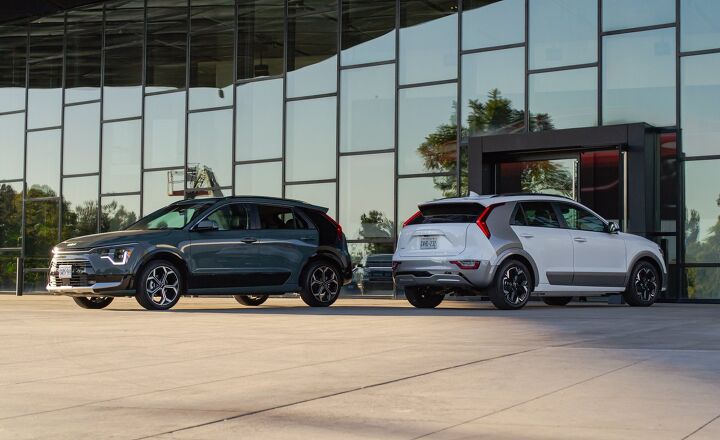


























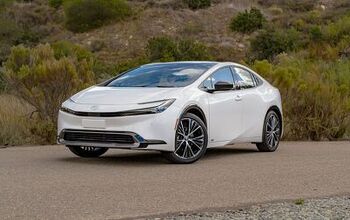



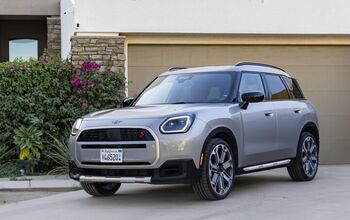
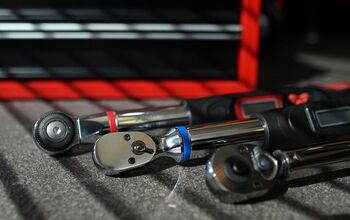

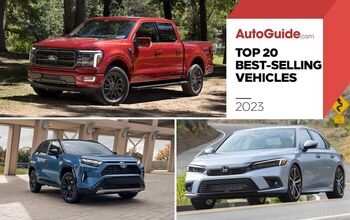




Comments
Join the conversation
Yet another Automotive site that caters to and seems to prefer Electric cars. Very sad I am sorry to say.
Take a look at the recent Artemis 1 picture of earth as a blue globe in the universe. It's all we have. Unlivable cities by 2050, tornadoes in November, drought in the southwest. Change needs to be made despite personal desires. We don't use whale oil for lights anymore.